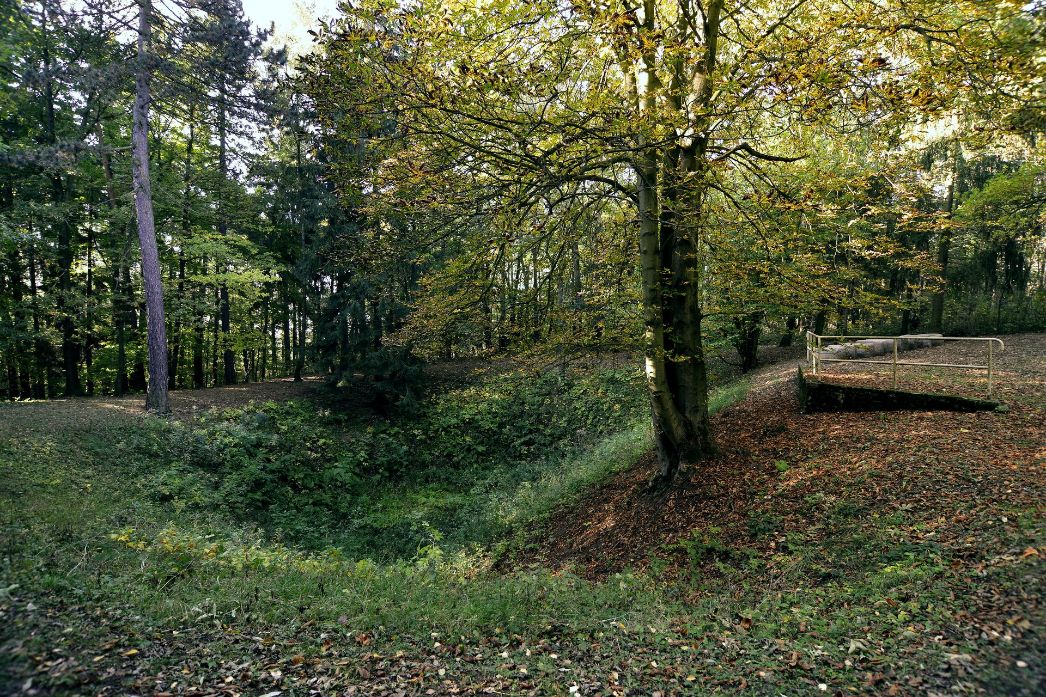Due to the continuous rise in death rates, the removal of ashes from the crematorium became a problem for the SS camp administration. The crematorium was in constant operation, and the yard of the facility repeatedly filled with the cremated remains of the dead. To dispose of these ashes, the SS had them transported to naturally occurring earthen sinkholes, which are often found in the Ettersberg region—so-called "devil's holes."
The ashes were filled into sacks and brought to the pit by truck at night. It took four to five hours for inmates to unload these sacks into the pit.
In this ashen grave lie the remains of many thousands of people.


